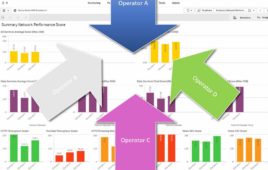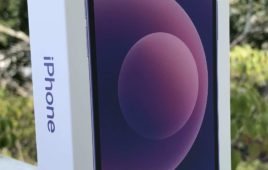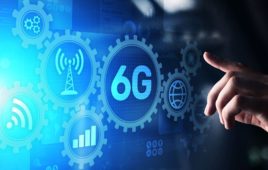U.S. Cellular won accolades for customer satisfaction in a Consumer Reports survey last month and its loyal customers know the value it provides. The problem, as U.S. Cellular sees it, is the customers of other carriers do not know about its dependability as a carrier.
That’s according to TDS President and CEO Ted Carlson, who spoke at the Citi 2012 Entertainment, Media and Telecommunications Conference in San Francisco on Wednesday. TDS is the majority owner of U.S. Cellular.
Carlson talked up U.S. Cellular’s handset line-up for 2012, especially the devices – leading with a tablet – that will work on its LTE network when that’s live before the end of the first quarter. He said U.S. Cellular offers handsets that are just as good as any iPhone model out there today, but customers who belong to its competitors don’t know that.
Typically, when it’s time to renew a contract, a consumer will shop only two operators’ stores. Once people come into the door of a U.C. Cellular store, the close ratio of a sale is higher than the national average, so the problem is getting them through the doors, not what happens once they’re in the store.
Building out its LTE network and attracting more customers are part of U.S. Cellular’s priorities for 2012, he said. U.S. Cellular has managed to attract 2.8 million customers to its Belief Project, which has helped lower its churn rate. The Belief plans reward customers for doing simple things like paying their wireless bills on time or referring friends. Points can be used to replace phones faster and other perks.
U.S. Cellular doesn’t want to be the leader in technology or the low-price space, but in customer service. The Consumer Reports list last month put U.S. Cellular at the top of its satisfaction survey, outranking top national providers.
The main issue is persuading customers of other carriers to consider U.S. Cellular when they’re deciding on their next carrier. “We’re starting to get the message through,” Carlson said, but it takes time.
Carlson also fielded questions about the ramifications of AT&T backing off its plan to acquire T-Mobile USA. If the acquisition had gone through, U.S. Cellular would have been interested in some markets up for divestitures, he said, and now it’s going to need to find other ways to get more spectrum. He’s not optimistic that the FCC will be able to release any spectrum this year.
As for LTE, U.S. Cellular plans to roll it out in about 24 markets this year, or about 25 percent of its total customer base. The company expects to roll out five to seven, roughly speaking, LTE devices this year, including handsets and a hotspot. The first device will be a tablet.
This year, it also will start rolling out a new billing system provided by Amdocs and start distribution in big box retail outlets.
Asked how the company will grow its wireless business if it’s unable to add subscribers, Carlson said the company didn’t grow subs in 2011 but still managed to increase its revenue by increased ARPU due to the rapid adoption of data plans. Only about a quarter of U.S. Cellular’s customers have smartphones now, and that number could go “north of 80 percent” at some point, he said, so there’s still room for growth. It’s also growing roaming revenue.
Asked how the company can possibly fight the battle of brands with dollars – going up against big brands like Apple, Carlson said he disagrees that it’s a losing proposition. “Brands come and go,” he said, noting Nokia’s rise and fall in popularity and RIM’s challenges.
Carlson said he couldn’t get into the details of discussions the company had with Apple, but as U.S. Cellular President and CEO Mary Dillon said during the third-quarter conference call, the risks of offering an iPhone outweighed the reward. Basically, U.S. Cellular didn’t like the terms and conditions that Apple was offering, so like T-Mobile, it’s without an iPhone in its smartphone line-up for now.




